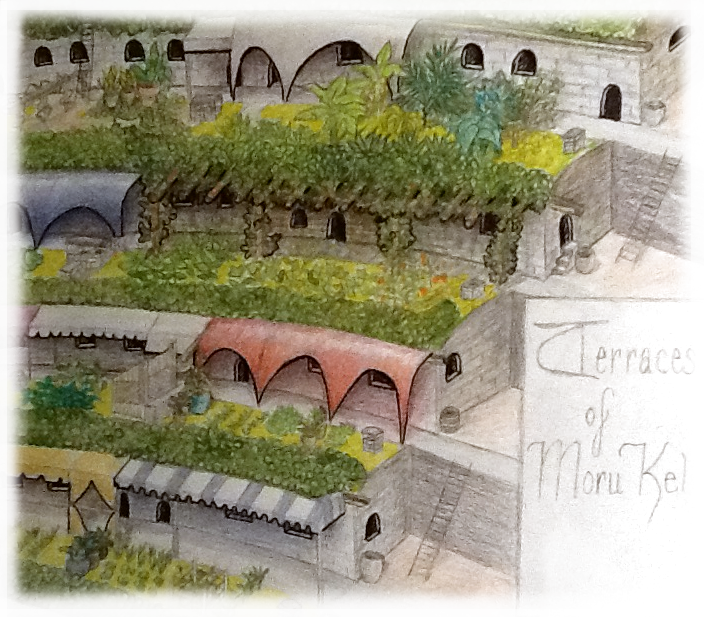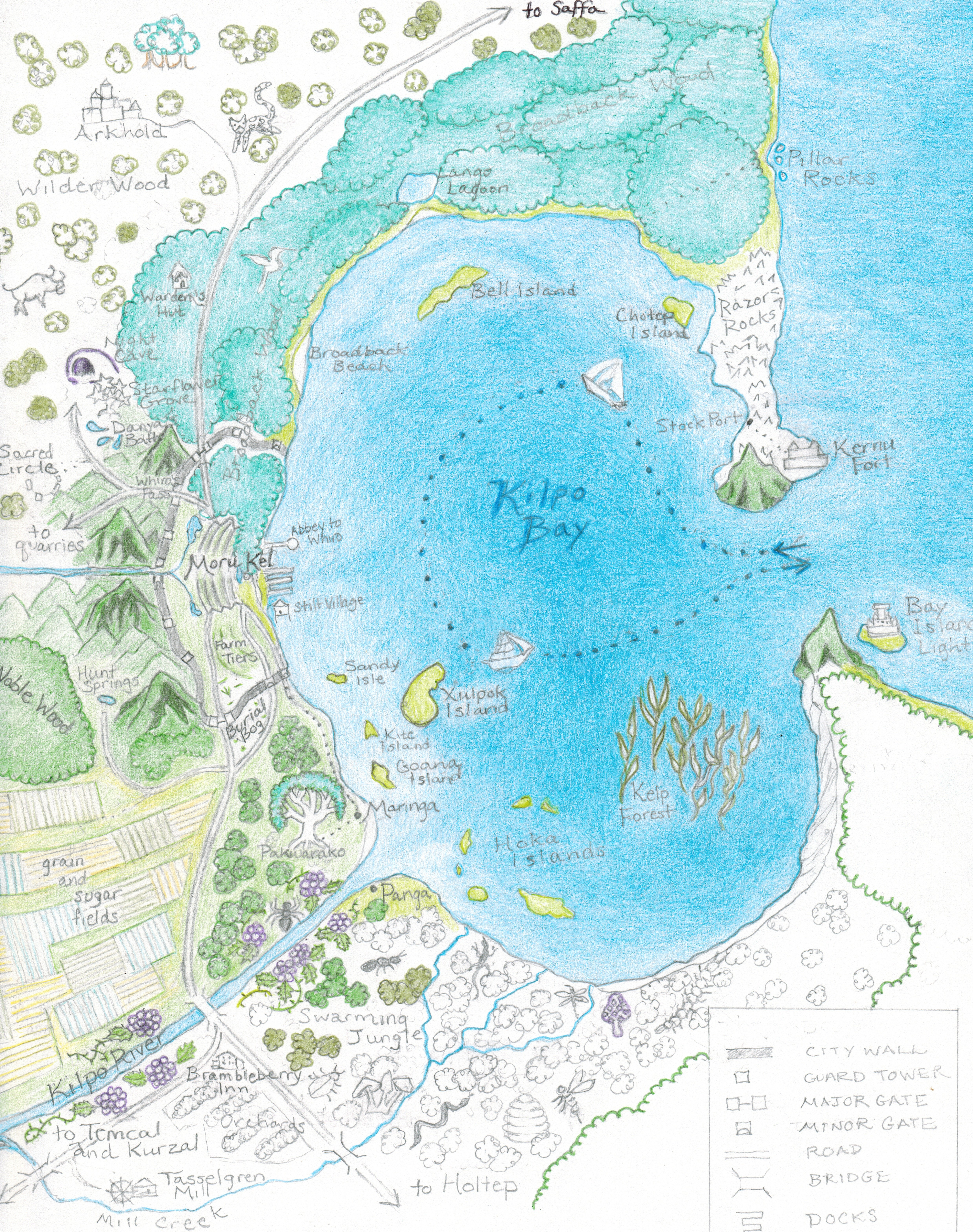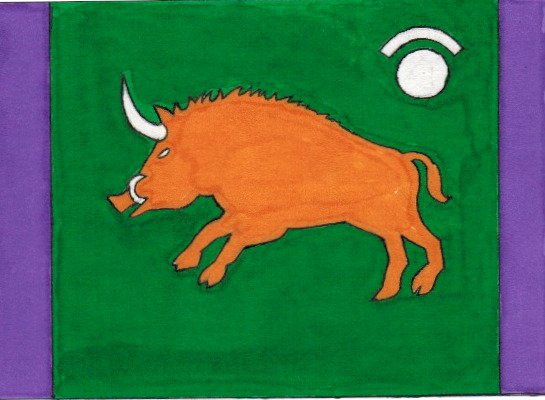Moru Kel

Moru Kel, the Terrace City, is carved in the side of a mountain next to Kilpo Bay. Two stunning natural 900' spires known as Kernu Apsu, “the tusks of the boar,” flank the entrance to the huge, crescent-shaped bay. A stunning mix of ancient engineering and modern ingenuity, the city sits on the site of the old Urek city of Skandara.
Ruled by the Marghoz Lango — a descendant of the city’s founder — Moru Kel is patrolled by the selfless members of the Sentinels of Koros, who act as city watch and protectors.
To the south of the city, a Seta fishing village is tucked behind hidden shoals; even further south, a Mahksi village sits on the waterline.
To the north of the city, the jungle gives way to rocky crags, before breaking into the plains that roll north toward Saffa.
Inland — to the west — a pair of mountains frames the setting sun in the evening.
Ancient Skandaran aquaducts run through the terraces, and their stairwells cut up and down the sides of the mountain. The Marghoz and other nobility make their homes in the upper tiers, with the orchards, docks, and Diamond Lake below. The Slow Road cuts across tiers, moving goods up and down the mountainside, while Scales Street runs from the docks through the marketplace downtown.
The city is vibrant with life: kites fly along the beaches, puppet shows dot the landings of the stairwells, and broadbacks drag goods from the ships to the villas and back. Rose stone villas gleam pink in the sunlight. A brand new funicular runs up one side of the city, allowing faster transit than ever before.
Moru Kel. The city awaits.


